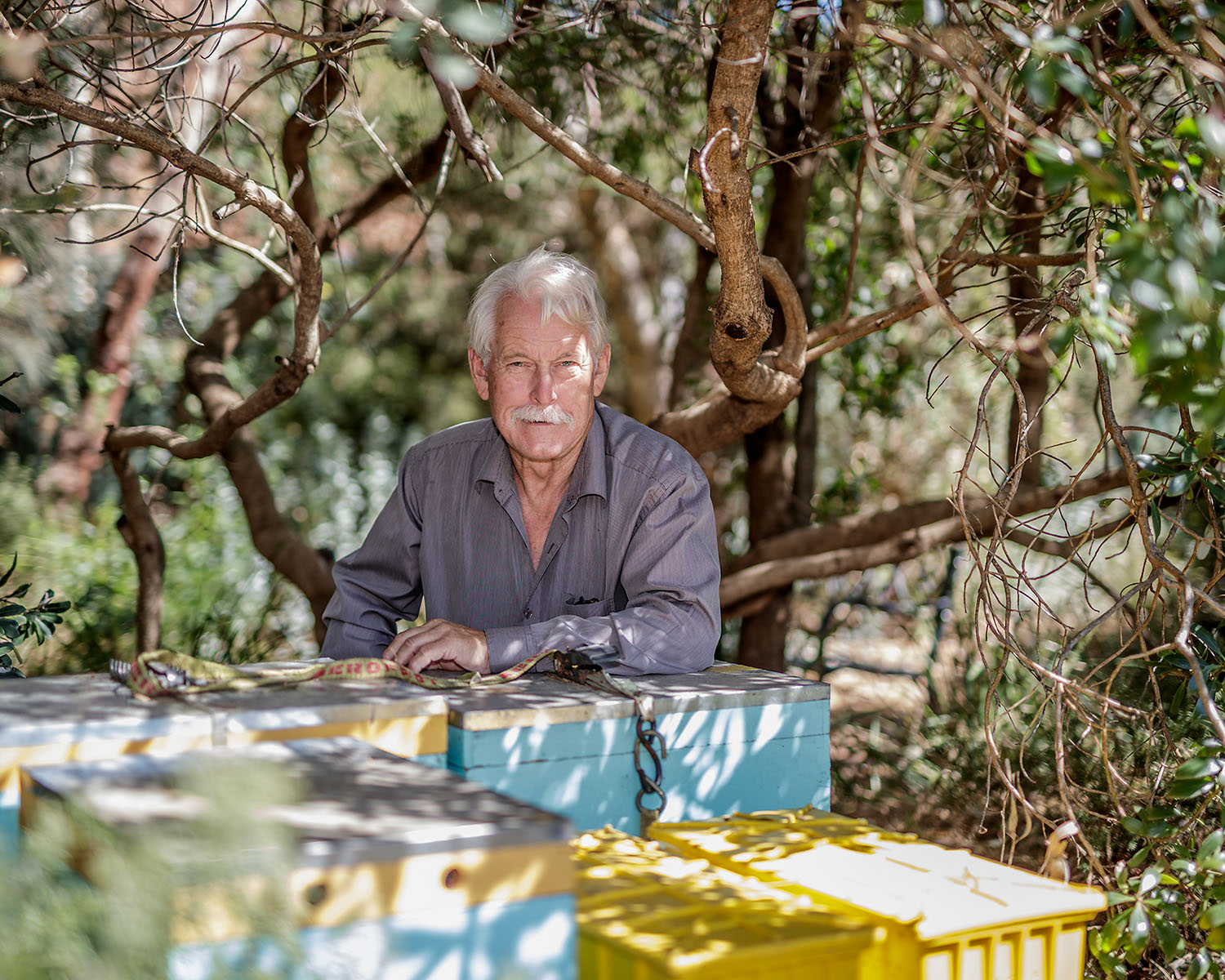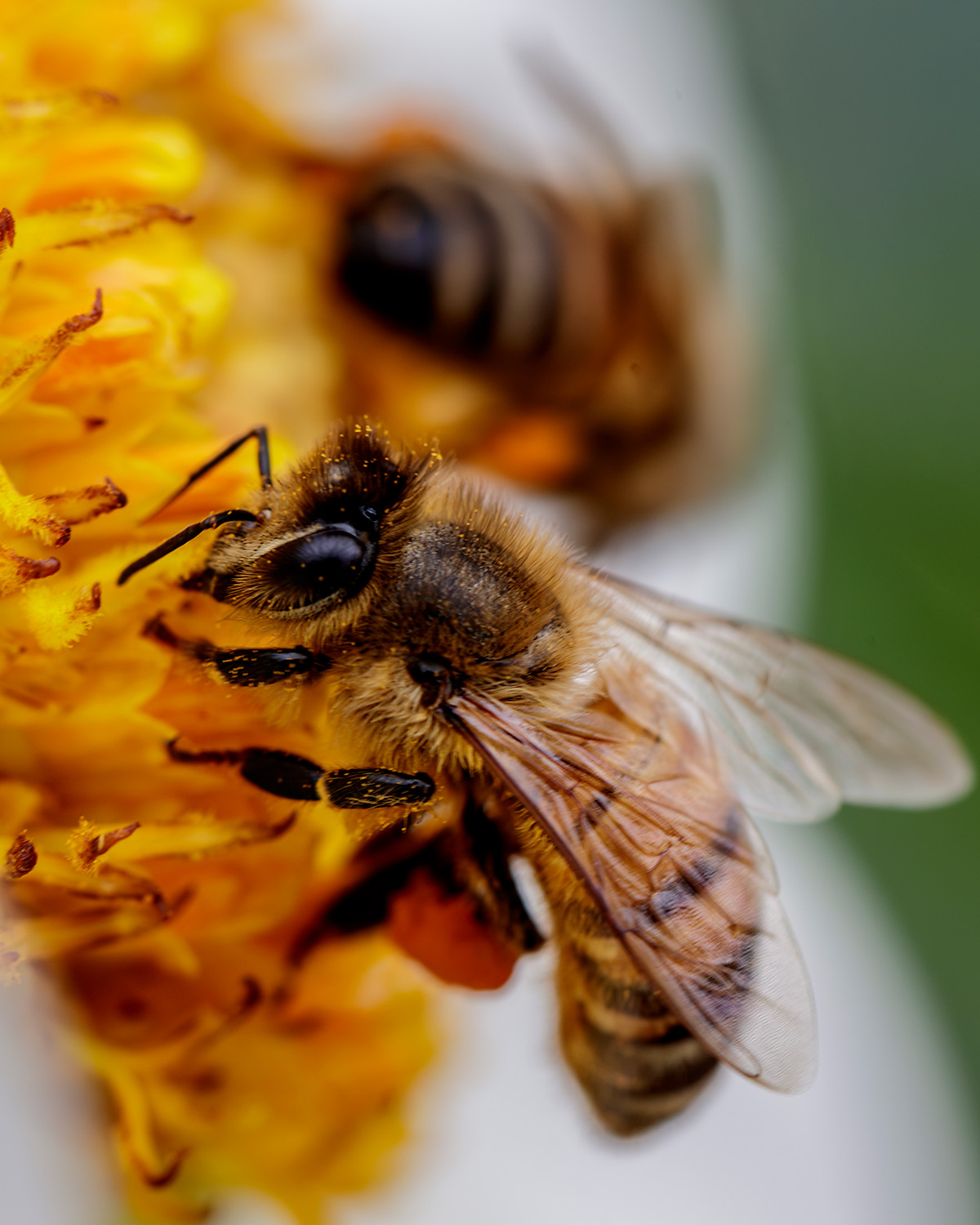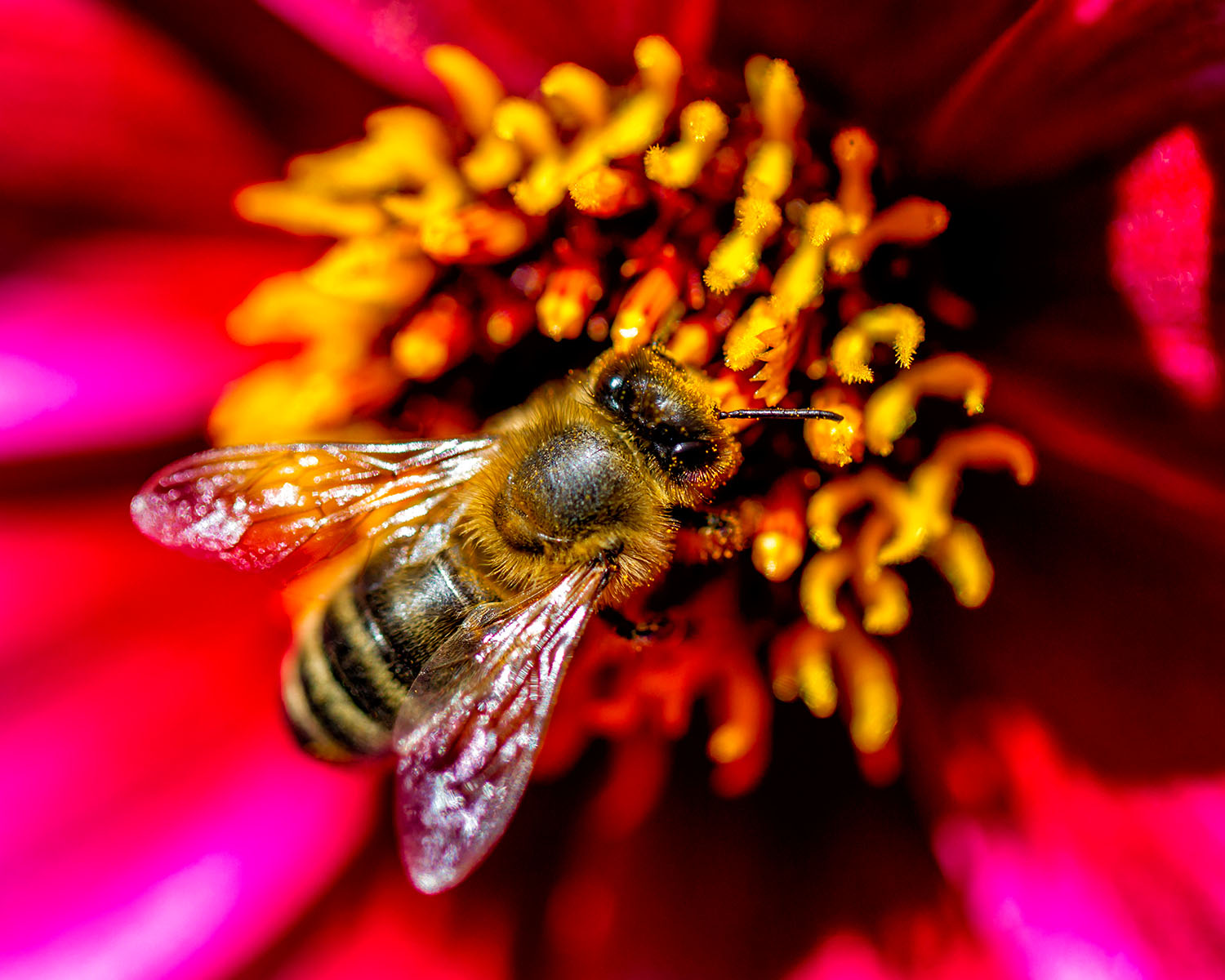
There aren’t many bee swarms that Chris ‘The Bee Whisperer’ Duffy hasn’t saved, but when he thinks of the ones he hasn’t, he becomes visibly upset. “It’s horrible,” he says. “One of those things I get emotional about. I’m a big guy; I’ve done a lot of things in sports, including the Australian Open and the Murray Marathon. I’ve been a lifesaver for twenty years. I love being outdoors, and I love saving bees. There are only two or three swarms I haven’t been able to save.”
It’s not swarm season for bees at the moment; Chris says the time to watch out for them is Grand Final time. “They love Grand Final Day. They need a little bit of warmth at the start of spring – that’s the first three weeks into September – then, depending on the weather, they’re there for the next two to three months.
The first thing people will see is a cluster of bees, and it’s intimidating. It’s scary to people, but the thing is, this is when bees are at their least aggressive because they’re like us after Christmas Dinner. They’ve stuffed themselves on food prior to swarming; they don’t have to protect a home, their honey, their brood, their hive. They come out looking for a place to settle.
Their natural progression is to increase their range of survival, so as it starts to get crowded inside the hive, one-third to a half flies off with the old queen. Before leaving, she leaves a whole lot of other queen cells in the hive, and they hatch out. So, when people see these huge swarms of bees, they can seriously cloud the whole sky. I had one guy call me and say, ‘I think Armageddon’s come.’ It blacked out the whole sun.”
“They land, usually on a fence post or a tree. They hang down, and it is beautiful to watch; I’ve seen hundreds of swarms, andI still love the beauty of how they hold together, even in the rain and the wet.
We had this guy down on the beach at the end of Tanti Avenue in Mornington, where the creek comes out. He had what we call an ‘air hive’, where they couldn’t find a suitable tree hole or go inside someone’s house, so they built it hanging from a tree. It is magic. This guy comes off the beach in his budgie smugglers, and he just puts his hands on the bees and says, ‘I talk to the girls every day’.” And they are girls – mostly.
I understand bees. I can tell when it’s an aggressive hum, or it’s a lovely, happy hum
‘Talking to the bees’ is an age-old custom where people would share their secrets with the bees. Does Chris talk to them? “I do, actually. I understand bees. I can tell when it’s an aggressive hum, or it’s a lovely, happy hum. I can walk amongst thousands of bees without a suit without any problem. Don’t wave your hands around. Ladies cop it because they’ve got longer hair and perfume, so bees are attracted to ladies. I take my hives all over Victoria and I counted at one stage that I had around two million bees, and I did not get one sting until I walked out the front gate and put my hand on one.”

When a swarm forms, Chris says, “They take off, usually in the afternoon; they’re pretty punctual, from eleven o’clock to three o’clock, preferably on a non-windy day when it’s not raining. They land somewhere within fifty metres because the old queen has been hive-trapped for two or three years and not using any muscles. She can’t fly, she can’t do anything. To get her ready to leave, they have what we call the ‘Queen Olympics’. A couple of weeks before they’re about to swarm, the other bees will chase her around the hive to make her work and exercise. They’ll push her out the front and give her a chance to have a little flap to build up her strength.”
In the past, there were many old trees with hollows where bees could form hives. These have become scarce, so bees are now looking for alternative nesting sites, which can be found in backyards or buildings. (Chris says their favourite place is the compost bin.) “Because of the decomposing matter in there, it’s warm and it’s got a roof over the top with small entrances; the bees love that. We get them in letterboxes, the barbeque… and they’re the good ones because you can get them out. Then we get them in someone’s house, and they only need a space the width of a pencil to go in, often where there’s pipework. Over the next three months, there can be up to 50,000 bees inside your brickwork where they have total protection.”
It may come as a surprise to hear that there are bee rustlers; hives can get stolen. Chris says, “There are some unscrupulous people who, like cattle rustlers, can work out where they are because they’re in forests in the middle of nowhere, they come in at night when the bees are at home and pick them up.”
Come Grand Final time, if you see a swarm or they land on your property, ring Chris. He is responsible for saving swarms on the peninsula. Before he (and others) started protesting about it, the council used to eradicate them. This still occasionally happens when it’s not possible to save them. Ninety-nine percent of the time, the bees can be saved and rehomed in hives in places like the Mornington Community Garden. It’s that other one percent that distresses him.

“I love the beauty of bees. They use every little space and they’re efficient. They’re incredible creatures. It’s my passion. We’ve even got the environmental emblem for them here on the peninsula, which is the blue-banded bee. It’s almost like a bumble bee, and they live solitary lives. You see them in pet bowls because bees think they can swim, but they can’t.” Chris advises putting rocks in water features and pet bowls so that bees can stand on them and drink without drowning.
If you have bees that need rescuing, contact Chris.
0421 514 742
chrismurraydaffy@gmail.com





